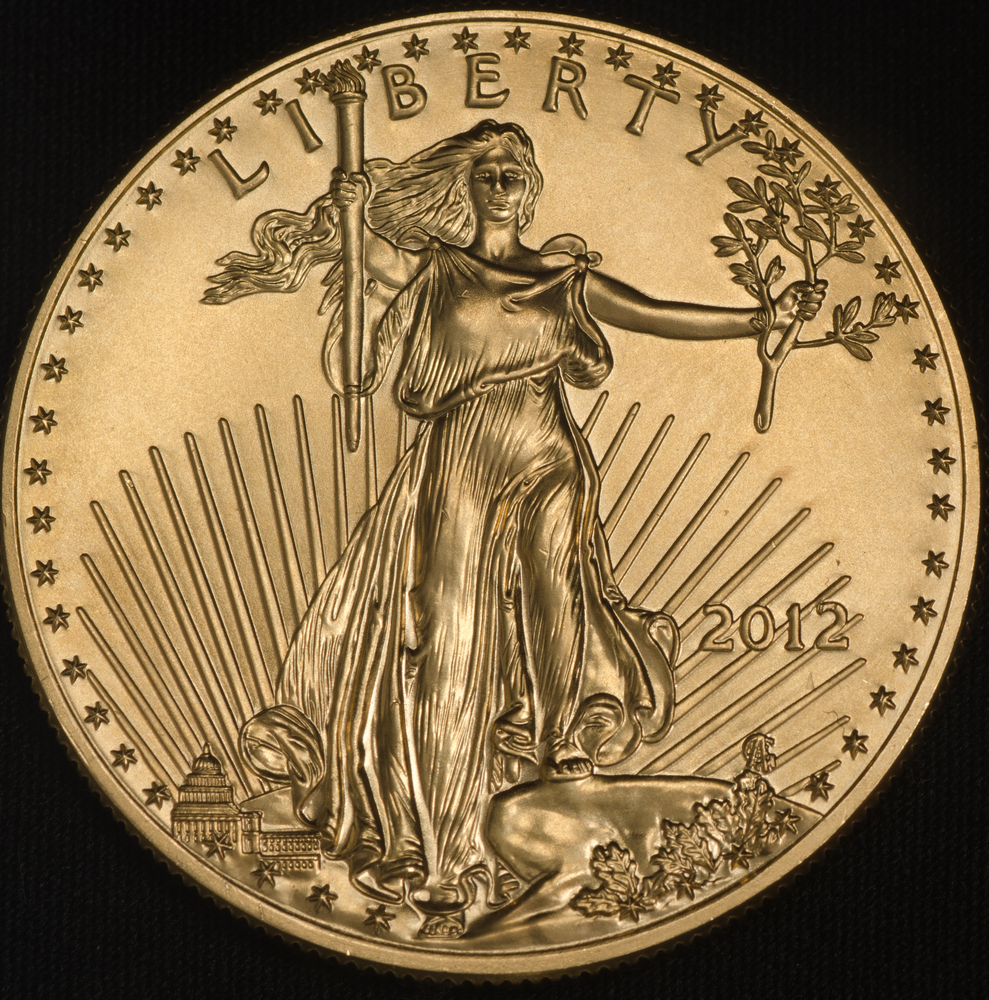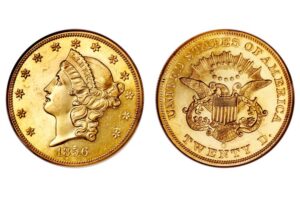Gold American Eagles are a popular form of investment-grade bullion coins produced by the United States Mint. They were first introduced in 1986 as the official gold bullion coin of the United States. During this same period, American Silver Eagles were starting to be produced also. Here’s a brief overview of their history and uses:
American Gold Eagle History
- The Gold American Eagle program was authorized by the Gold Bullion Coin Act of 1985, which aimed to offer an alternative to privately minted gold bullion coins and bars.
- The United States Mint started producing Gold American Eagles in 1986. The designs on the coins were inspired by the historic $20 Saint-Gaudens Double Eagle, a gold coin minted from 1907 to 1933.
- The obverse (front) of the Gold American Eagle features a depiction of Lady Liberty holding a torch and an olive branch, designed by Augustus Saint-Gaudens.
- The reverse (back) of the coin depicts a family of American eagles, designed by sculptor Miley Busiek.
American Gold Eagle Uses
- Investment: Gold American Eagles are primarily purchased as a means of investing in physical gold. They are recognized globally and highly liquid, meaning they can be easily bought, sold, and traded.
- Store of Value: Gold has historically been considered a reliable store of value and a hedge against inflation. Many investors buy Gold American Eagles to preserve their wealth during uncertain economic times.
- Portfolio Diversification: Gold American Eagles can help diversify an investment portfolio, reducing overall risk. Their value tends to move independently of other assets like stocks and bonds.
- Collector’s Item: Some individuals collect Gold American Eagles for their historical and aesthetic value. They appreciate the coins’ intricate designs and rarity, particularly certain limited-edition or graded versions.
- Legal Tender: Although their intrinsic gold value far exceeds their face value, Gold American Eagles are considered legal tender in the United States. The face value of the 1 oz coin is $50, while fractional sizes carry lower denominations.
It’s important to note that the value of Gold American Eagles is determined by their gold content and prevailing market prices, rather than their face value. Additionally, when purchasing Gold American Eagles, it’s advisable to buy from reputable dealers to ensure authenticity and quality.
American Gold Eagle Mintages
The American Gold Eagle is a popular gold bullion coin produced by the United States Mint. It was first introduced in 1986 as part of the Gold Bullion Coin Act, and it is available in various denominations including 1/10 oz, 1/4 oz, 1/2 oz, and 1 oz. The American Gold Eagle coins are typically minted in both proof and bullion versions.
The mintages of American Gold Eagles have varied over the years. Here are the mintages for the bullion versions (non-proof) of the 1 oz American Gold Eagle coins from 1986 to 2021:
- 1986: 1,362,650
- 1987: 1,045,500
- 1988: 465,500
- 1989: 415,790
- 1990: 373,210
- 1991: 243,100
- 1992: 275,000
- 1993: 480,192
- 1994: 221,663
- 1995: 198,500
- 1996: 223,025
- 1997: 1,639,500
- 1998: 1,468,530
- 1999: 1,505,026
- 2000: 433,319
- 2001: 143,605
- 2002: 222,029
- 2003: 416,032
- 2004: 417,019
- 2005: 356,555
- 2006: 237,510
- 2007: 140,016
- 2008: 710,000
- 2009: 1,493,000
- 2010: 1,125,000
- 2011: 857,000
- 2012: 675,000
- 2013: 758,500
- 2014: 425,000
- 2015: 626,500
- 2016: 817,500
- 2017: 228,500
- 2018: 245,500
- 2019: 152,000
- 2020: 747,500
- 2021: 435,000
Please note that these figures are for the 1 oz bullion versions of the American Gold Eagle. The mintages for other denominations and proof versions may differ.



